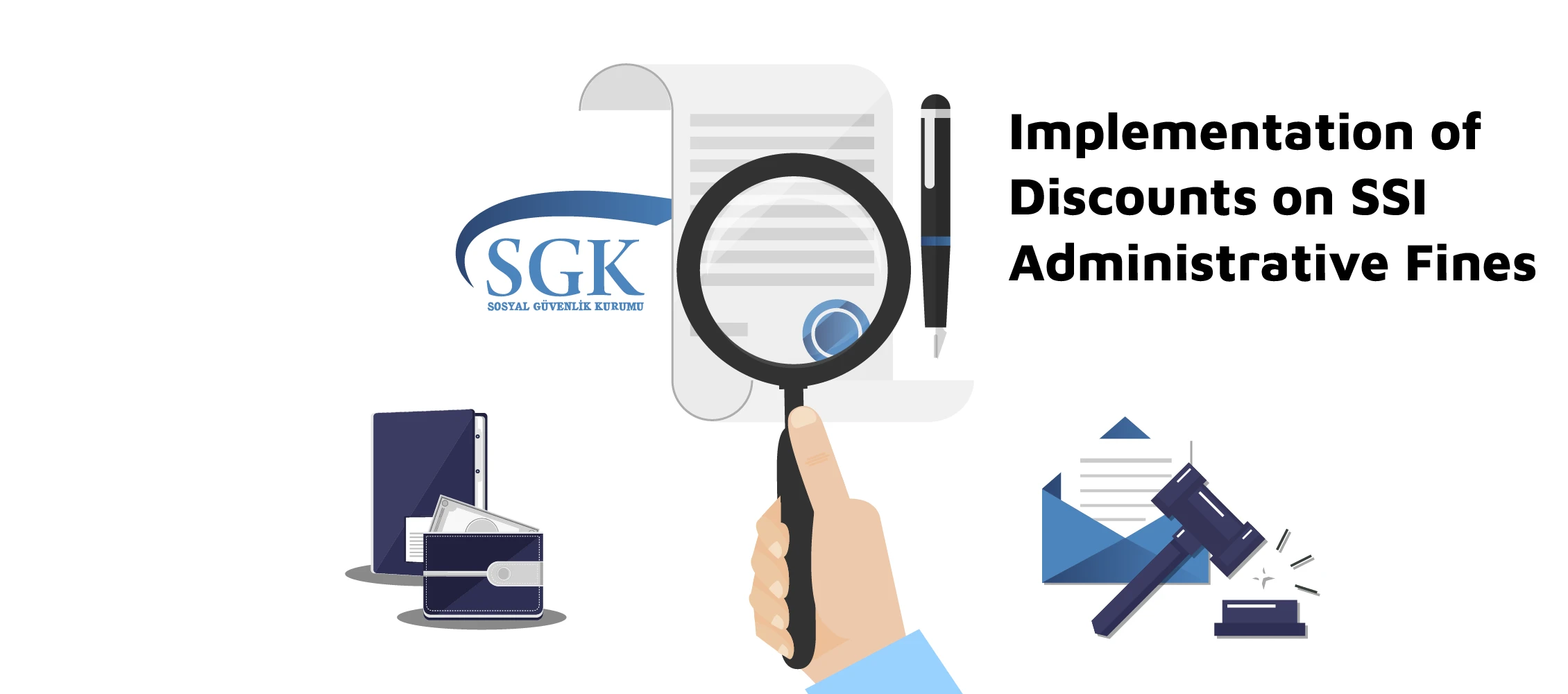17 March 2025
Disputed Situations in the Notification of Contribution Payment Days

The number of premium payment days and the corresponding wage notifications are among the most frequently confused topics in working life. With the arrival of February, this situation becomes even more complex. The fact that the month has 28 or 29 days causes particular hesitation in the notification of premium days during this period. While the issue of earnings subject to premiums falls within the relevant scope of Social Security Law, the matter of wages to be paid in return for work pertains to Labor Law. Therefore, it is necessary to reach a conclusion by evaluating both disciplines together. In this study, the assessment has been conducted by following the aforementioned method.
Evaluation from the Perspective of Social Security Law
The fundamental principle regarding the number of days for which premiums are paid and the notification of daily earnings is as follows: For an insured person who works fully within a month and receives wages accordingly, the number of premium payment days should be reported as 30 days, regardless of how many days the month has. In other words, for a worker who works fully within a month, the notification should be made as 30 days, irrespective of whether the month has 29, 30, or 31 days.
Calculation of Premium Payment Days for Insured Persons Starting or Leaving a Job During a Month/Period
For insured persons who start working within a month, the number of insured days should be reported by performing a finger count (including the start date) and considering the period until the last day of the month. For insured persons who leave their job within a month, the number of insured days should be reported by taking into account the number of days worked and paid up to the date of departure (including the departure date).
Calculation of Premium Payment Days for Insured Persons Without Job Entry or Exit Within a Month/Period
For insured persons who do not start or leave a job within a month/period but do not work on certain days of the month/period due to various reasons such as rest, unpaid leave, or disciplinary penalties, and who do not receive wages for the days they do not work, the number of premium payment days for the relevant month/period is calculated by subtracting the number of days for which they were not entitled to wages from the total number of days in that month/period (calendar days).
In other words, if a worker works fewer days within a month due to reasons such as unpaid leave, rest, etc., the result should be reached by subtracting the days they did not work from the total number of calendar days in that month.
For a worker who works fully in February, regardless of whether the wage system is daily or fixed, the insured notification should be made based on 30 days.
Calculation of Premium Payment Days in Case of Transfer to Another Workplace of the Same Employer Within a Month Without Termination of the Employment Contract
In cases where an insured person is transferred to another workplace owned by the same employer within a month without any interruption in their employment contract, the insured notification should be made as 30 days. The total number of insured days in the previous workplaces before the transfer date and the number of days in the new workplace should add up to 30 days.
When an insured person is transferred to a different workplace of the same employer or when the workplace is relocated to a different social security center, the calculation and notification of the premium payment days are subject to specific rules. In such cases, the continuity of the insured person’s service period—meaning their entitlement to a full monthly wage—is essential.
Insured Notification Regarding Transfers Occurring in February
In months like February, where the number of days varies as 28 or 29, various difficulties arise in the notification of insured persons due to transfer processes.
For an insured person who has earned a full wage in February and whose service continues uninterrupted, in the case of a transfer to another workplace owned by the same employer or the relocation of the workplace to another social security center, the total number of premium days for the periods before and after the transfer date occurring within February must be reported as 30 days.
To ensure the premium days total 30, the following rules will be applied:
- When February has 29 days, 1 day is added to the number of premium days reported for the previous workplace.
- When February has 28 days, 2 days are added to the number of premium days reported for the previous workplace.
- In the e-Declaration system, without specifying the departure date, the remaining days are reported as incomplete days under the "OTHER" code.
However,
- In February months with 28 days, if the insured person leaves the previous workplace on the 26th or 27th of the month, the missing 2 days cannot be added to the previous workplace. In this case, the addition is made to the number of premium days in the new workplace, and the remaining days are reported under the "OTHER" code.
- In February months with 29 days, if the insured person leaves the previous workplace on the 28th, the missing 1 day cannot be added to the previous workplace. Instead, the addition is made to the number of premium days in the new workplace.
- In the e-Declaration system, without specifying the entry date, the remaining days are reported as incomplete days under the "OTHER" code.
Examples
- If a worker works full-time in January 2024, which has 31 days, or in February 2024, which has 29 days, the number of insured days will be 30 days.
- For a worker who leaves the job on 27.01.2024 in the 2024/01 period, an insured notification of 24 days will need to be made.
- For a worker who starts working on 27.01.2024 in the 2024/01 period, an insured notification of 5 days (27-28-29-30-31) will need to be made.
- For a worker who starts working on 27.02.2024 in the 2024/02 period, an insured notification of 3 days (27, 28, 29) will need to be made.
- If a worker takes 1 day of unpaid leave in the 2024/01 period, it will be 31-1=30 insured days.
- If a worker takes 2 days of unpaid leave in the 2024/01 period, it will be 31-2=29 insured days.
- If a worker takes 2 days of unpaid leave in February 2024, which has 29 days, in the 2024/02 period, it will be 29-2=27 insured days.
- If a worker takes 2 days of unpaid leave in February 2025, which has 28 days, in the 2025/02 period, it will be 28-2=26 insured days.
- A workplace located in Erzincan closed on February 4, 2023 and was relocated to Istanbul as of February 5, 2023, with a new workplace file registered due to the transfer. For an insured person who earned a full wage within the month and whose service continued uninterrupted in both workplaces, the total number of insured days in the month will be reported as 30 days: From the previous workplace (using the old e-declaration password), 4+2=6 days will be reported (with 22 days reported as incomplete days under the "OTHER" reason without selecting a departure date). From the newly registered workplace (using the new e-declaration password), 26 days will be reported.
- A workplace located in Istanbul closed on February 27, 2025 and was relocated to Izmir as of February 28, 2025, with a new workplace file registered due to the transfer. For an insured person who earned a full wage within the month and whose service continued uninterrupted in both workplaces, the total number of insured days in the month will be reported as 30 days: From the previous workplace (using the old e-declaration password), 27 days will be reported. From the newly registered workplace (using the new e-declaration password), 1+2=3 days will be reported (with 25 days reported as incomplete days under the "OTHER" reason without selecting an entry date).
- When an insured employee working at the Istanbul branch of a workplace is terminated on February 28, 2024 and transferred to the Ankara branch via relocation on February 29, 2024, the total insured days within the month will be reported as 30, as the employee has earned full salary entitlement for February and has maintained uninterrupted service at both workplaces. The previous workplace (using the old e-declaration password) will report 28 days, while the newly registered workplace (using the new e-declaration password) will report 1+1=2 days. The missing 27 days will be reported under the "OTHER" reason without selecting a new hiring date.
Exception
In cases where the worker’s full wage is paid during a period of rest, regardless of the payment made by the Social Security Institution (SGK), the number of insured days will be 30. If no wages are paid for those days, the rest period will be calculated by subtracting the number of days of rest from the total number of days in the month in which the event occurred, following the method described above.
Example
If a worker takes 3 days of rest in the 2024/1 period and their monthly wage is paid in full, the number of insured days will be 30. If, during this period, the employer does not pay wages for the 3 days of rest, an insured notification of 31-3=28 days will need to be made.
Evaluation from the Perspective of Labor Law
The evaluation from the perspective of Labor Law is conducted to determine the number of wages to be paid to the worker and the number of working days. This is because the number of insured days reported to the Social Security Institution (SGK) and the number of days used as the basis for the wages to be paid to the worker may differ.
Here, the worker’s wage payment system is of importance. The worker may be employed on a fixed monthly wage or a daily wage.
A fixed wage refers to a situation where the worker receives a constant wage each month, regardless of how many days the month consists of (whether 28, 29, 30, or 31 days). In working life, the fixed wage payment system is more common. In this case, the daily wage is calculated by dividing the monthly wage by 30, regardless of the number of days in the month.
A daily wage refers to a situation where the daily wage amount is agreed upon in the contract, and payment is made based on the determined daily wage amount for the days actually worked within the month, as well as for days considered as worked without performing labor (e.g., national holidays, weekly rest days, etc.). In summary, it is the payment for the days worked or deemed worked within the month.
Examples
- For workers employed on a fixed wage: If a worker takes 1 day of unpaid leave in January 2025, which has 31 days, their monthly wage should be divided by 30, and payment should be made for (30-1=) 29 days. In this case, while the number of days reported to SGK is 30 (31-1), the wage amount to be paid to the worker will correspond to 29 days.
- If a worker is employed on a daily wage: If they take 1 day of unpaid leave in January 2025, they will work 30 days (31-1=), and thus a wage for 30 days should be paid. The SGK notification will also be (31-1=) 30 days.
- If a worker employed on a fixed wage takes 2 days of unpaid leave in February 2024, which has 29 days: Their monthly wage should be divided by 30, and payment should be made for (30-2=) 28 days. The SGK notification will be (29-2=) 27 days.
- If a worker employed on a daily wage takes 2 days of unpaid leave in February 2024, which has 29 days: Payment should be made for 29-2=27 days. The SGK notification will also be (29-2=) 27 days.
- If a worker employed on a fixed wage takes 2 days of unpaid leave in February 2025, which has 28 days: Their monthly wage should be divided by 30, and payment should be made for (30-2=) 28 days. The SGK notification will be (28-2=) 26 days.
- If a worker employed on a daily wage takes 2 days of unpaid leave in February 2025, which has 28 days: Payment should be made for 28-2=26 days. The SGK notification will also be (28-2=) 26 days.
Should you have any queries or need further details, please contact us.
Notification!






